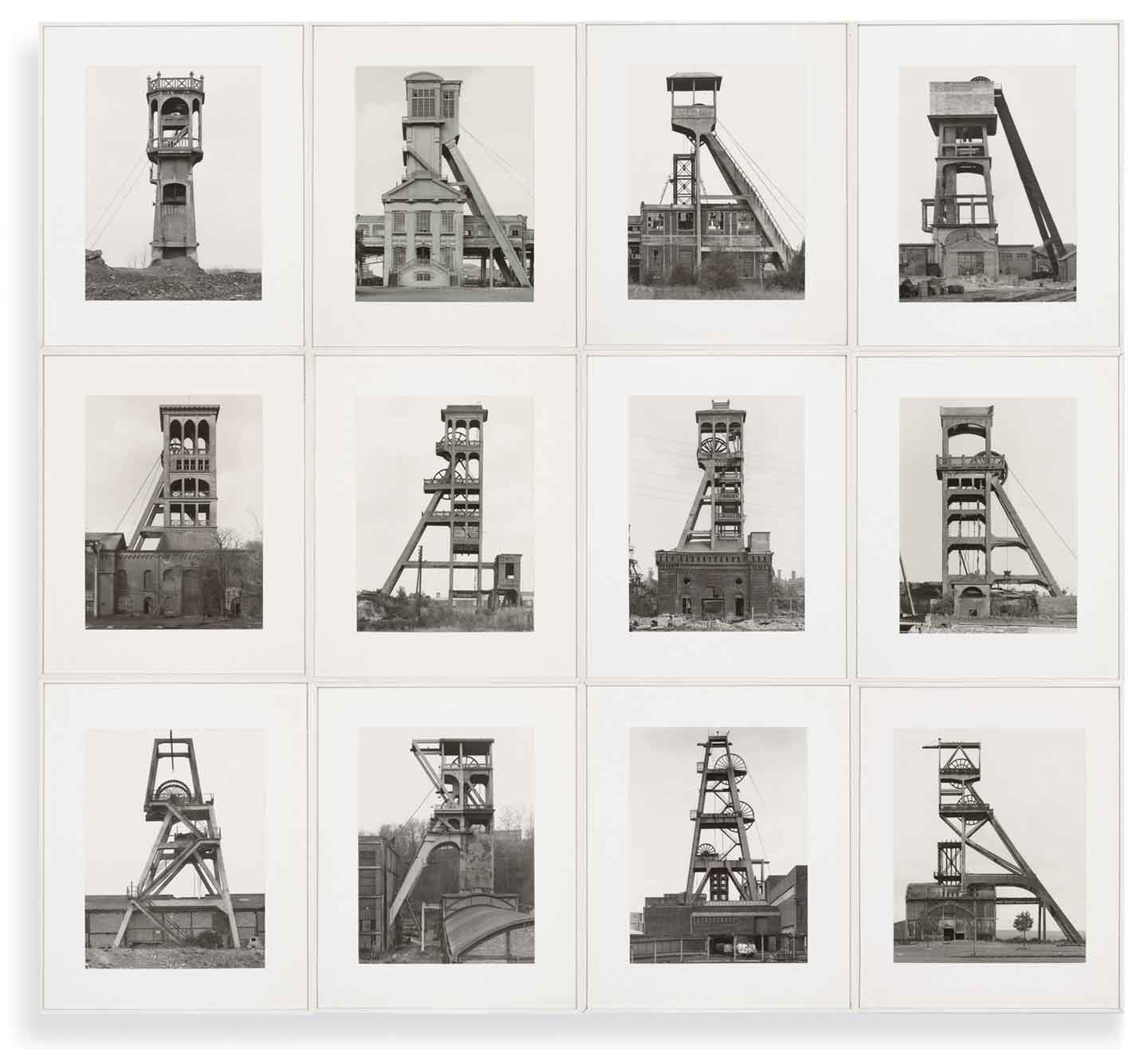For The Nation, Jana Prikryl writes about Bernd and Hilla Becher and their lifelong pursuit photographing blast furnaces and other ornaments of the diminishing post-war industrial landscape. Prikryl’s essay gives depth to the Becher’s work and overall legend, focusing on Hilla’s contributions to the team. Given that she was born in 1934 and the vast majority of her contemporaries were male (as was her collaborator), and the generally reclusive nature of the Becher duo, Hilla’s story seems incredibly important to recount. Read Prikryl in partial below, or in full via The Nation.
Hilla once said that her aim, even as an apprentice photographer, had been to capture “silent objects.” Bernd was born in 1931 and Hilla in ’34, so they were children during the war, a time they rarely if ever discussed on the record. After Bernd’s death, Hilla was interviewed by two German journalists, Tobias Haberl and Dominik Wichmann, and told them: “It’s true, we both got roughed up a lot by the war. I remember how I thought after the war: God, my parents have such sentimental ideals of landscapes, beauty, music.” Without specifying how her family suffered, she suggests that it freed her from older ways of looking: “The idea of a bourgeois life was gone, I didn’t take those things that seriously any longer. That way, I was open for an independent way to view things.” When Haberl and Wichmann challenge the political detachment of the Bechers’ photographs, which they note contain “no Cold War, no student movement, no re-unification,” Hilla replies: “That we did on purpose. We always said: We cannot comment. We never took sides during a strike. You can’t criticize when you want to photographically conclude something.” And yet she adds: “What matters is whether the blast furnace produces hospital beds [or] steel for bombs.” “Were accusations made against you?” the journalists ask. “Of course! We were accused of making something look beautiful that could be used…” They assist: “…to kill people.” “Exactly.”
❧
The Bechers once tried to collaborate with historians—a project that was abandoned because their collaborators intended to “write a text, and garnish their text with our photos,” Bernd recalled in 2002. “They couldn’t imagine that photographs could stand on their own.” And Hilla added: “Working with them, we felt for the first time that we weren’t free.” The most generous interpretation of their refusal to discuss the past (or garnish their photos with texts) is to see it as a formal decision, a theoretical counterpart to the way the images evoke absolute emotional restraint, whether about the photographers’ backgrounds or the objects’ uses. This recalls the lifelong self-erasure of the Japanese painter On Kawara—another late modernist who died quite recently and whose 50-year career of painting nothing but the day’s date, day after day, was married to a reticence about himself that was so total (no interviews, no photographs except from the back, and, like Bernd, routine avoidance of his own openings) that it passes through morbid withdrawal into a kind of sublime expressiveness by dint of its consistency and its departure from common practice. About the same age as the Bechers, On Kawara was a child during Japan’s adventure as an Axis power, a high-school student during the bombings of Hiroshima and Nagasaki. He later said his wartime experiences made him doubt “everything.” Everything—every grain of narrative information, aside from the abstract placeholder of date—is withheld from his pictures in a negative capability that is similar to the little we know about what we see in the Bechers’ photographs. Could this distrust of making assertions be a response to the trauma of growing up in one of the aggressor nations during World War II? Yet other painters of the same generation (I think again of Richter and Polke) discovered themselves precisely by confronting the historical taboos of German culture in the 1960s.
❧
If On Kawara carried his doubt to its ultimate conclusion, emptying his canvases of all but code, the Bechers never lost faith in the plain old that-which-can-be-seen. Their unquenchable attraction to industrial forms has a real innocence about it. In 2008, Hilla was asked, “But why furnaces and conveyor belts?” She replied: “Because they are honest. They are functional, and they reflect what they do—that is what we liked. A person always is what s/he wants to be, never what s/he is. Even an animal usually plays a role in front of the camera.” Is there not some innocence, too, in the notion that the massive buildings and equipment of any given industry play no rhetorical role in suggesting the power of their masters? When Hilla is asked whether they “never got bored of blast furnaces, not once in forty years?,” she replies, “Never. We studied this anonymous architecture, object after object, until we understood the enormous variety of the subject…. We learned how blast furnaces worked, how they were constructed, what parts they had.” It seems they were curious only about the mechanics of each structure, a bit like children learning about fire stations. “And then it was easier to find out whether there was a front and back. At some stage we asked ourselves: Does a blast furnace have a face?” But the next question—if so, wouldn’t a blast furnace also “play a role in front of the camera”?—remains unspoken.
*Image: Bernd and Hilla Becher, “Shaft Towers; Forderturme,” 1966-79. (Private Collection / Bridgeman Images)
